What are the advantages of a V4 engine?
With manufacturers getting switched on to the idea of the V4 engine configuration, Visordown takes a deep dive into the layout

THE concept of the V4 engine configuration powering a motorcycle has been around since the early days of motorcycle engineering. One of the first bikes to mass-produce a successful V4 powerplant in a bike was the Matchless Silver Hawk from the 1930s, although the shape and design of the engine was much more square-four than a true V4.
From then, the configuration has dipped in and out of motorcycle design but never really gained traction again more modern bikes, especially those racing in championships like the MotoGP, began to use the configuration.
But what’s driving this change of heart in a layout that was, for many years at least, consigned to be featured in oddities and oddball one-offs?
What is a V4 engine?
Simply put a V4 engine is a four-cylinder engine, with two sets of pistons either located ahead of, and behind one another, or on opposing sides of the bike. The more common modern layout is the longitudinally mounted V4, whereby you the two banks of cylinders sit one in front of the other – as per the Ducati Panigale V4 and Streetfighter models. The other type of layout is to mount the engine transversely, with the banks of cylinders sitting on each side of the bike, one on the left side and one om the right.
There are pros and cons of each configuration and each lends itself better to some bikes due to the way it can be used. For instance, a transversely mounted V4 (like the Motus V4 at the top of the page) is great if you’re looking to utilise a shaft drive output to the rear wheel. The output from the crank is already pointing backward to the rear of the bike, meaning hooking a gearbox and shaft drive to the unit is extremely simple. A longitudinally mounted V4 lends itself better to chain drive, as the output from the crank is coming out of the side of the engine, making it easy to direct into the ratios in the gearbox.
For these reasons, a transversely mounted V4 is historically found in touring, adventure, and less sporty machines, while the longitudinally mounted configuration is normally seen in sports bikes and high-performance nakeds.
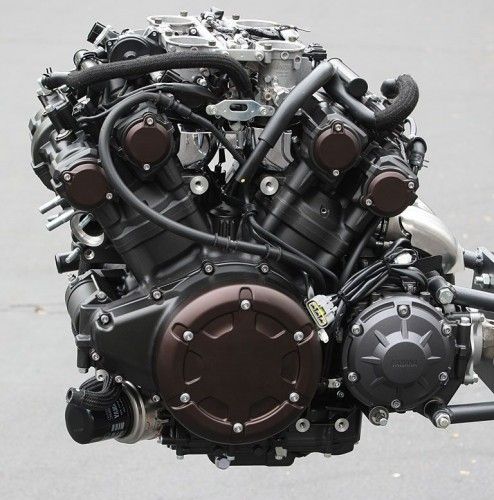
What are the advantages of the V4 engine layout?
There are many wide-ranging advantages to running a V4 configuration. With that in mind, we’re going to break the next part up into a few different sections.
Packaging
Regardless of how it is mounted in the frame, a V4 engine is a compact piece of kit. Cramming a lot of mechanical parts into a relatively small space for their size. If you imagine an inline four-cylinder engine for instance; behind the bank of cylinders, there’s a vast area of empty space that sits above the gearbox on a conventional bike. Engine designers will think of this as wasted space, and their colleagues in the vehicle design department will quickly work to fill the void with fuel injection systems, electronics, and other associated paraphernalia.
A V4 engine, by comparison, is a very efficient piece of engineering, with much smaller, less wasteful areas of dead space.
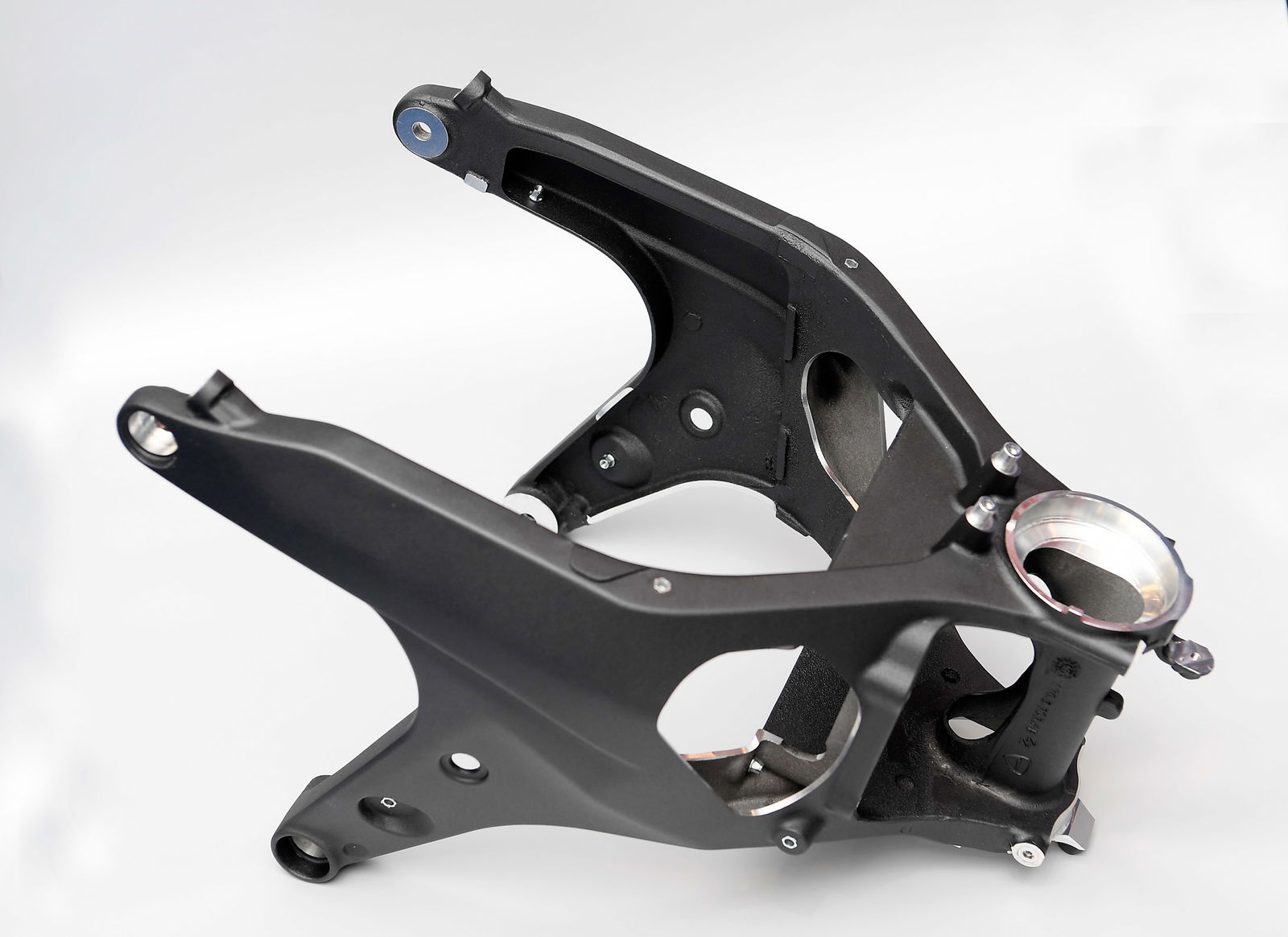
This is all the frame a Ducati V4 Panigale needs...
Tensile strength
With the compact dimensions compared to their more widely used counterparts comes another knock-on benefit. The V4 configuration is extraordinarily strong, offering levels of rigidity and tensile strength that an inline-four, or even a V-twin, simply cannot match.
For this reason, a V4 engine is prime for slotting into a bike that uses the engine as a stressed member. In this way, the engine can now take up some of the stresses of cornering, acceleration and of course braking. Because the engine can help to carry so much of the load of riding, the frame can be smaller and ancillary structures, like the swingarm and rear subframe, can now just be bolted directly to the engine.
Take the Ducati Panigale V4, it’s one of the best handling bikes on road and track and at its heart is a V4 engine. But it’s not all the engine making the bike handle so sweetly, but it is part of a clever design solution. Because the Desmosedici-derived engine is so strong, the Panigale’s frame can be shrunk to the point that it is basically just a headstock, for the steering head, and two spars that run down each side of the bike. Removing the need for a diamond or twin-spar frame can massively reduce the weight of the bike. And not just by the six or seven kg a conventional frame weighs.
It has massive knock-on benefits to the manufacturing process and can reduce the number of fasteners that are required to hold the bike together. When you have your sights set on global glory on the racing stage, every gram really does matter.
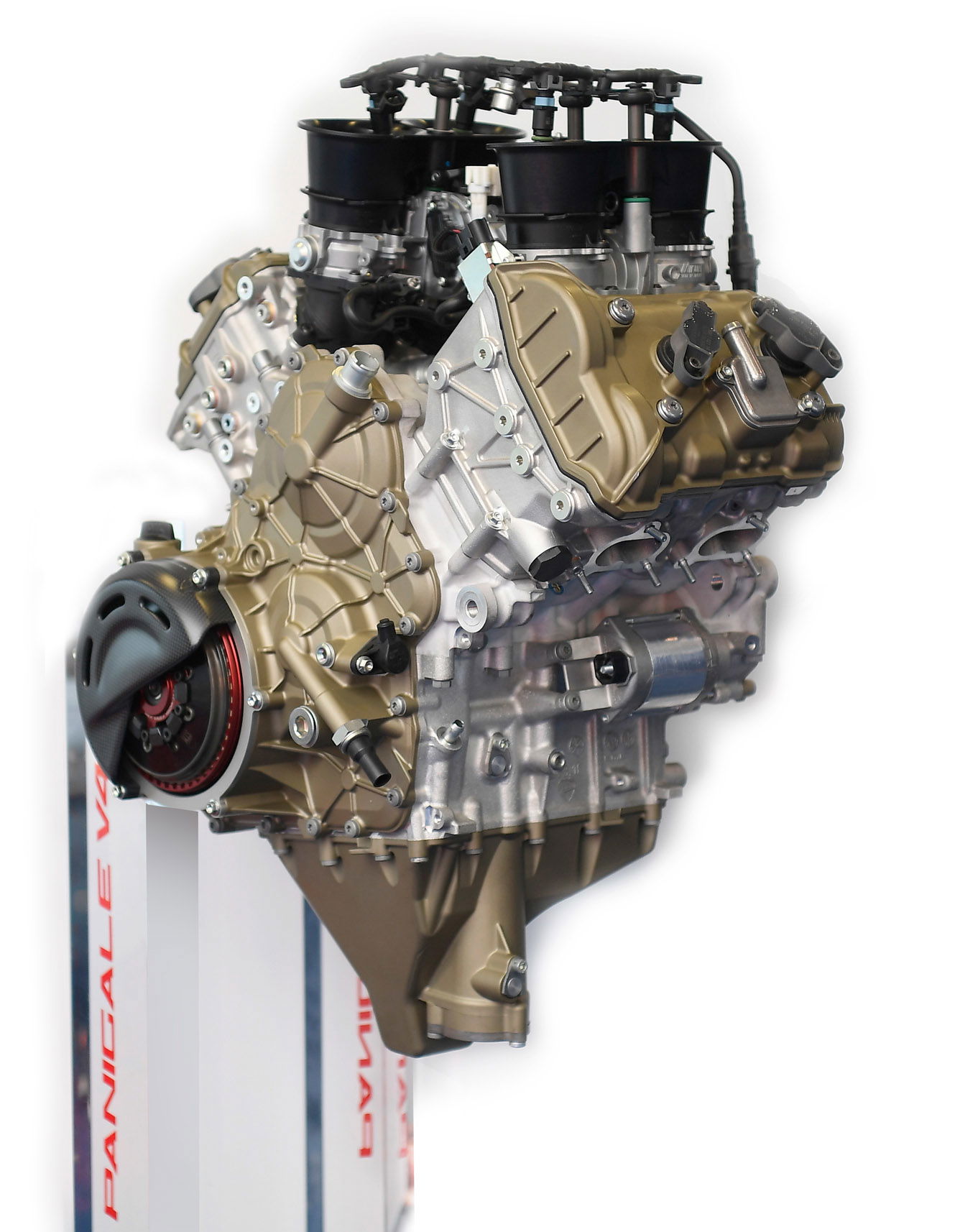
Mass centralisation
This is a phrase that’s been banded around the bike world for years now and the biggest strides here are on bikes that have a V4 engine. Because of the compact nature of the beast, it’s very easy for a bike designer to pinpoint where the centre of gravity (CoG) of the engine needs to be to create the kind of handling characteristics they need.
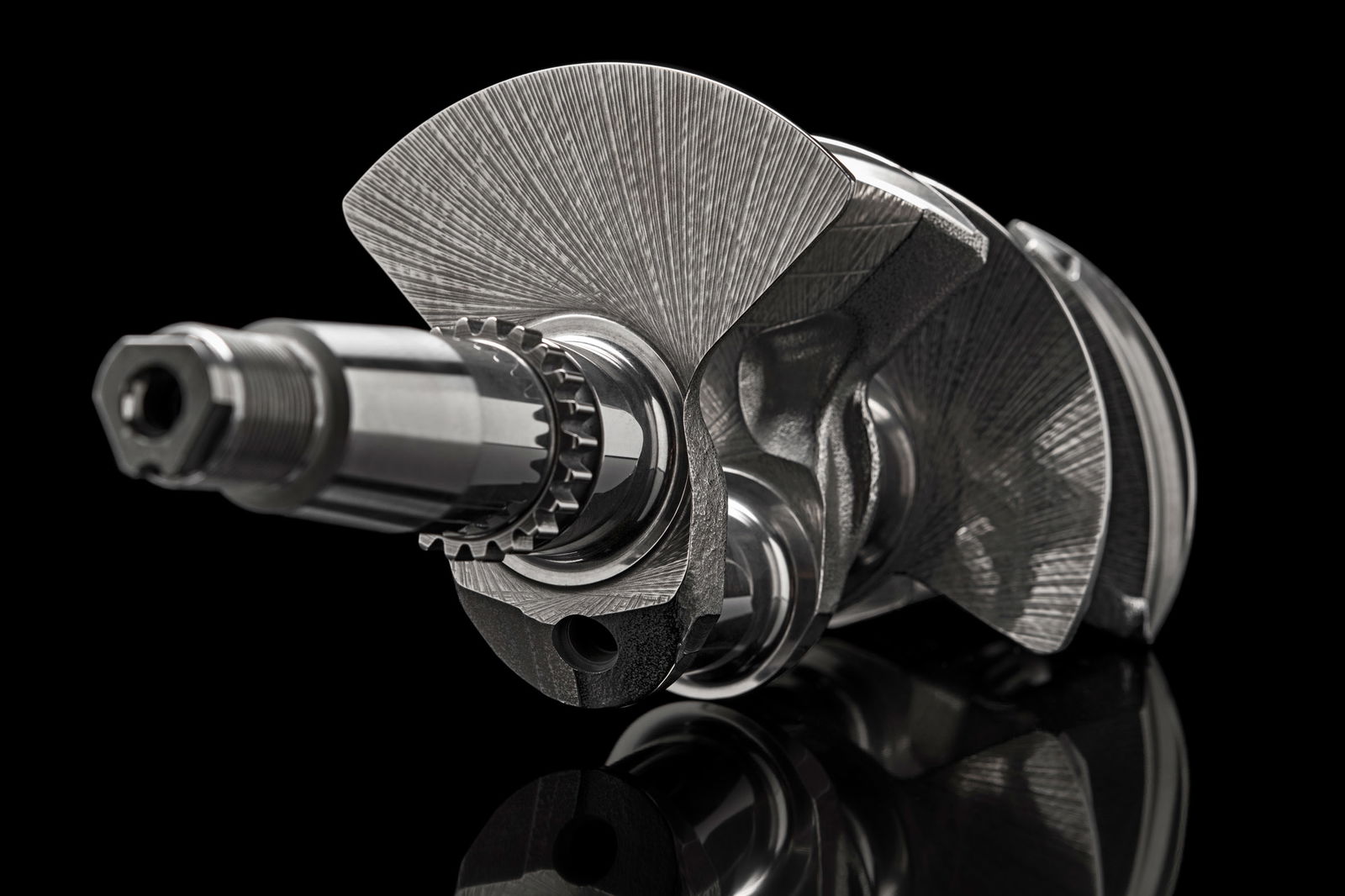
Is there any drawback to the V4 engine configuration?
As with any engineering design, yes, there are some things you need to address. Heat can be an issue, especially if you have a transversely mounted V4. In this scenario, the heat of the front bank of cylinders will flow over the rear bank, causing them to heat up in a slightly uneven manner. It’s not something that can’t be fixed though, and clearly people like Ducati and Yamaha (who used this type of engine in the VMAX) have had time to work on their magical solutions.
longitudinally mounted V4 engines have less of an issue on this front, although the rear two cylinders will normally run marginally hotter than the front two. Bikes with this configuration are often seen to have their rocker covers or entire cylinder heads poking out of the bike’s fairing as a way of dissipating the heat.
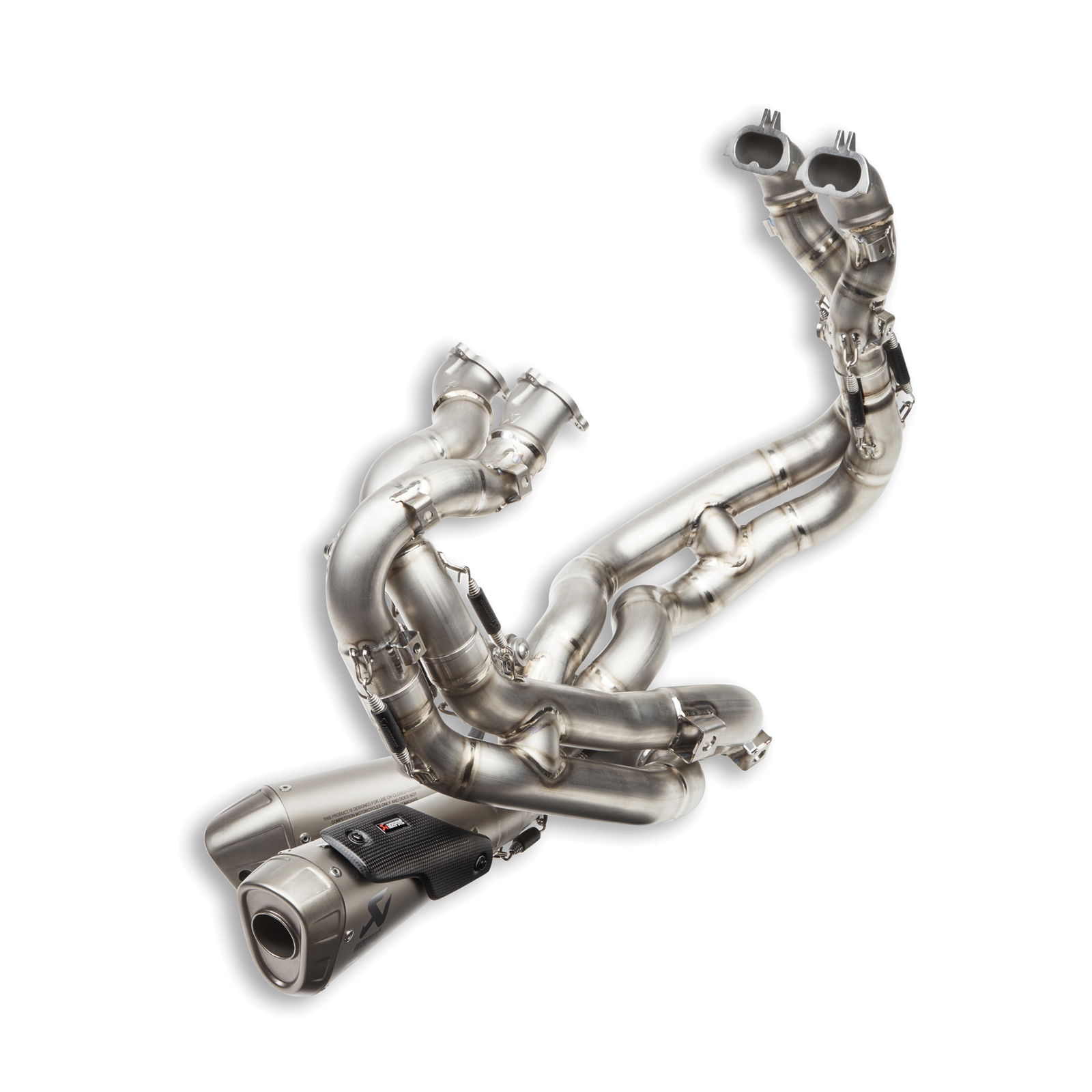
The exhaust of a V4 is a much more complex piece of engineering than a conventional inline four-cylinder engine's system
A V4 engine is also a more complex bit of kit to manufacture, you need two cylinder heads, two exhaust manifolds, two valvetrains, and twice as many camshafts as an inline-four. That means a V-4 is expensive to develop and expensive to build. Had Ducati not already had the Desmosedici engine in their race bikes, it’s doubtful they’d have developed one just for the road.
Sponsored By

Britain's No.1 Specialist Tools and Machinery Superstores
When it comes to buying tools and machinery, you need to know you're buying from specialists who know what they're talking about.
Machine Mart eat, sleep and breathe tools and machinery, and are constantly updating their range to give you the very best choice and value for money - all backed by expert advice from their friendly and knowledgeable staff. With superstores nationwide, a dedicated mail order department and a 24 hour website offering quality branded items at fiercely competitive prices, they should be your first choice for quality tools and equipment.
.jpg?width=1600)
.JPG?width=1600)
